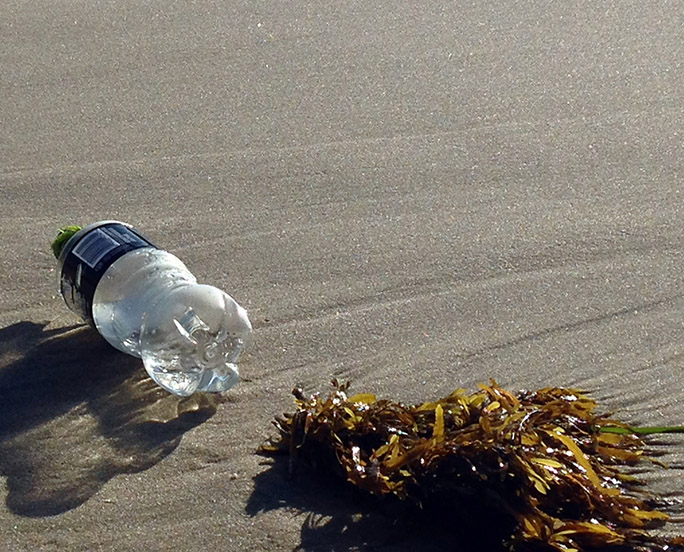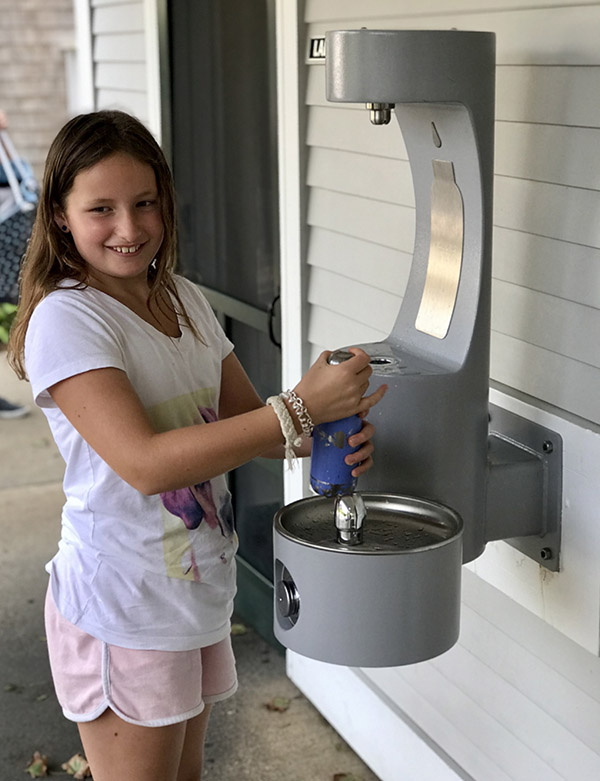
Take Back the Tap
“Everyone has the right to water that is physically accessible and in the immediate vicinity of educational institutions, workplaces and health institutions.”
– United Nations General Assembly
Water
The blue blanket covering 70% of the Earth’s surface, the vital compound that constitutes 60% of our bodies — it is impossible to think of anything more essential to life. Abundant on Earth yet much less so elsewhere, it is no wonder that any search for life beyond our blue planet often begins with a search for extraterrestrial water. It is also no wonder that those who are striving to improve the living conditions of all humanity view access to clean drinking water as a fundamental human right. The UN statement at the head of this page is just one of many expressions of this idea.
For healthy ecosystems — and people
Clean and readily available water is vital to maintaining the health of natural ecosystems and human communities alike. Here on Martha’s Vineyard, the former of these has received considerable attention: threats to water quality have been a point of emphasis for Towns, the MV Commission, and non-profits (including VCS, but also please see Great Pond Foundation and MV Shellfish Group for more). Problems remain, perhaps the most challenging being the excessive nitrogen in our estuaries. However, the Massachusetts Estuaries Project has now brought specific targets for nitrogen reduction, developed through scientific study, and backed by the force of law. It is fair to say that conservationists have succeeded in convincing the public of the importance of our water resources to a healthy natural environment.
Yet somehow along the way we allowed our drinking water to undergo a dramatic transition, from free-flowing natural resource shared by all to just another commodity: a product — packaged, transported, and marketed — available to anyone willing and able to pay. Water fountains have gradually disappeared from the public sphere (routinely left “out of order” two or three decades ago, but today simply gone). Their function is now served by the ubiquitous single-use plastic water bottle. These developments are not coincidences, though we would not be so cynical as to conclude anything about the order of causality (or intent) in this nationwide cultural substitution.
Taking Back the Tap
Following on the heels of the campaign to ban single-use plastic checkout bags, VCS began working on what we saw as the obvious next step in waste reduction. When considering all the factors, it was the enormous number of single-serving, disposable plastic water bottles that, after plastic bags, were the next most egregious and unnecessary source of waste.

However, the issue of disposable bottles presents a different sort of challenge than disposable bags. Plastic bags could be seamlessly replaced with alternatives that are not only better for the environment, but also better at the core function of a bag: getting your stuff home from the store. We were confident then, that should it pass at Town Meeting, the bag ban would grow to be overwhelmingly popular.
Unlike plastic bags, though, much of the public today has a sincere preference for bottled water. The realization that we must decrease the demand for bottled water is the conceptual underpinning of the “Take Back the Tap” initiative. Our research revealed that the factors motivating people to buy bottled water generally fit into two categories: quality and convenience. To address concerns over the taste or cleanliness of tap water, we began educational efforts (such as the “Tap Water Challenge” during Zero Waste Week at Tisbury School). However, it is the second issue — convenience — that may pose the greater challenge. Life moves quickly, even on Martha’s Vineyard, and to keep pace, we have grown to rely on a degree of convenience unimaginable a century ago.
This is why we believe the most important accomplishment to date of the Take Back the Tap program has been the installation of water bottle refill stations across the Island. These machines get at the root of both sets of motivators, quality and convenience, by providing chilled, filtered water — not just for free, but also more quickly than buying a bottle from the store or vending machine. Thanks to a generous anonymous donor, refill stations were first installed in all of our schools, and more recently we have been expanding into other high-traffic public places. Stations can now be found at 20 locations across the Island, with many more in the works or yet to come.

The goal is to create a highly visible network that will immediately decrease the need for bottled water, while over the long haul demonstrating to residents and visitors alike that we are very fortunate to have excellent drinking water on our Island — so we should be using it.
Consumption and mindfulness
There are situations where bottled water is entirely justifiable. Following natural disasters it can be a necessary part of relief efforts. In many places around the globe, public infrastructure does not provide adequate drinking water; bottled water here may take the form of a 20 liter jug inside homes, similar to the office “water cooler.” And while the crisis in Flint, MI is the rare exception to the rule that municipal drinking water in the USA is safe, it is nonetheless a very real issue.
Yet none of this has anything to do with why, at the beach and the ballgame, the cooler full of ice water has been replaced by a cooler full of iced water bottles. The goal of the Take Back the Tap initiative is to greatly reduce an unnecessary source of waste — and, more broadly, to foster a sense of mindfulness regarding our consumption habits.
We consume fifty million single-use water bottles annually in the United States – 167 per person on average – and the overwhelming majority of this waste is not based on a well-founded concern over water quality. In this country, tap water is more tightly regulated than bottled, which often doesn’t measure up to the EPA’s municipal water quality standards. Independent testing by the Environmental Working Group found 38 pollutants, in various combinations, in ten sampled brands. (If you have a well, you can have your own water tested – unfortunately, at your own expense – but at least you can be reasonably sure the water will be the same from glass to glass, and doesn’t contain chemical plasticizers and tiny particles of plastic.)
Finally, we should look beyond the bottle itself to consider the broader impacts of transporting our drinking water from France or Fiji — or even just from Maine and California. Pumping, processing, and bottling is a major contributor to climate change. The real Poland Spring in Maine dried up decades ago; will Nestle, the owner of the water brand that bears its name, be more careful not to deplete the other springs it now sources from? More astonishing (or even outrageous) is the fact that much of today’s bottled water comes from municipal supplies in southern California and other western states, where severe drought has become a routine issue. To import drinking water here, to our water-blessed Island, from a place where farmers, homeowners, industry, and the natural environment are desperately clawing for their share of a vital resource is truly a marvel of modern economics that we need not be a part of any longer. Let’s take back the tap!

